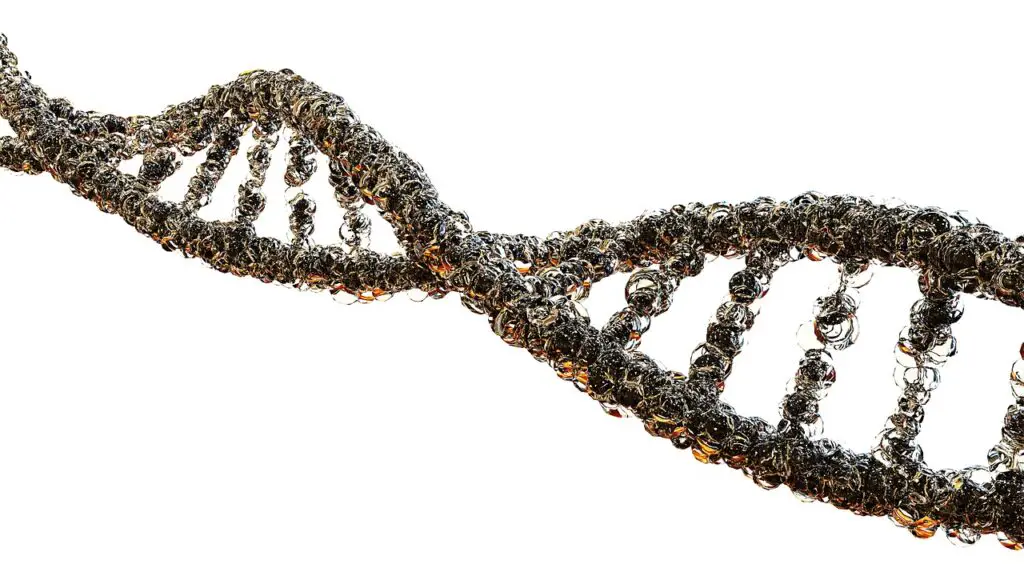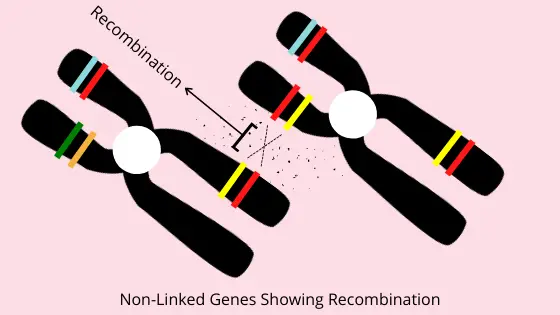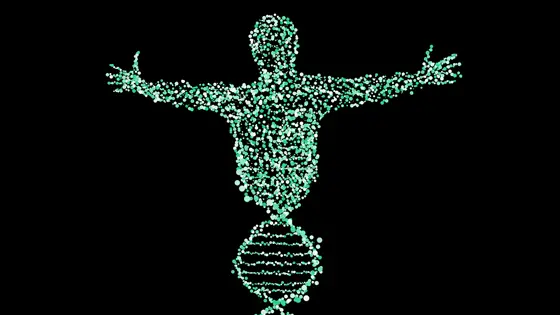Why Is Everyone’s DNA Different? Let’s Know!
You may have heard often that no two persons on earth are the same. Why is it? It’s because their DNAs are different.
You will never find two genetically similar person on earth. That’s what make us totally unique.
Everyone’s DNA is different because all person on earth has a 99.9% matching DNA and only a 0.1% DNA is different from person to person. This 0.1% change is due to the varying effects of mutations that make everyone’s DNA unique.
Mutations are the primary reason for DNA variability from person to person. Mutations can occur during the DNA replication process of cell division if errors are made and not corrected in time.
Over a lifetime, our DNA can undergo changes or mutations in the sequence of bases: A, C, G, and T. This results in changes in the proteins that are made during gene expressions.
Mutation is actually necessary as it creates differentiation and variability and helps the living organisms to evolve over time.
That’s why slow mutation is also supported by evolution.
Let’s read more and understand each and every concept very clearly and precisely. So, let’s get started…

What makes DNA different from person to person?
The way people inherit genes from their parents makes the DNA different from person to person.
Also, the changes that can occur in the DNA sequence during the various genetic working of the body can also make the DNA different from person to person.
Genes are the chunks of DNA that express a particular genetic trait in the living body. And when the DNA is being replicated some changes in the nucleotide sequence can occur. These changes can lead to mutation.
Also during the meiosis stage of cell division, when the parental and maternal chromosomes come together to share the genetic traits, recombination can occur.
This recombination can bring variation to the offspring which will also make them unique from others.
Both mutation and recombination are the reasons for changing the DNA sections and expressing different genetic traits that aren’t 0.1% the same as that of the parents.
Mutations are the prime reason for the DNA being different from person to person.
Human DNA is 99.9% identical from person to person. Although a 0.1% difference occurs in every person that makes them and their DNA different from person to person.
The genome (complete set of human DNA in a person) contains billions of locations (nitrogenous bases) that are identical in every person.
Whereas, the 0.1% difference is actually represented by the millions of different locations in the genome (complete set of human DNA) where variations can occur.
Why is everyone’s DNA fingerprint different?
We have learned that in every person 99.9% of the DNA sequence is identical whereas, only 0.1% is different for every person. This concept is used in DNA fingerprinting.
DNA fingerprinting is a technique of DNA profiling utilized in determining the DNA nucleotide sequences which are specific to each individual.
And moreover, the probability that two people received exactly the same number of repeated sequences from their two parents is one in several hundred trillion.
This means that almost every person has his/her unique nucleotide sequence of the DNA. Not the whole DNA is different but, only 0.1% of the DNA is different from person to person.
The probability of having two people with the same DNA fingerprint that are not identical twins is very small. Just like your actual fingerprint, your DNA fingerprint is something you are born with, it is unique to only you.
In DNA fingerprinting, scientists extract DNA samples from the blood, body fluids, etc. The samples are extracted, cut, and then separated using electrophoresis technique.
The fragments are being transferred to a nylon membrane where they are tagged and the fingerprint pattern is identified based on probability factors using powerful computer calculating power to read the sequence of the extracted DNA.
In every person’s cell, there are billions of base pairs that are identical. From these billions of base pairs, there are only millions of base pairs that are unique to every person.
Using DNA fingerprinting, scientists try to identify only those millions of base pairs and see if it matches with another person based on probability factors.
In this process, scientists isolate and analyze distinct areas of these base pairs to find DNA fingerprints.
This is very useful in solving paternity and maternity disputes, in determining population and genetic diversities, in the detection of crimes, etc.

How is DNA different from person to person?
DNA is different from person to person because of the various changes in the various nitrogenous bases in the nucleotide sequence of DNA from person to person.
This is caused due to mutation that can occur due to errors in DNA recombination, chemical damage to DNA, radiation effects, etc.
Almost 99.9% (billions of the nucleotide sequence) of DNA is identical, and only about 0.1% (millions of nucleotide sequence) differs from person to person.
The difference is only about 1 in every 1,200 to 1,500 DNA bases in the genomic nucleotide sequence for each and every human being.
In numbers, if you see, there are more than three million differences between your genome and anyone else’s.
Mutation is the key reason for such changes that occur in the DNA from person to person. The mutation is a permanent alteration in the DNA base sequence, such that the sequence differs from person to person.
Mutations in the base sequence have resulted from errors that occur during DNA replication. Physical and chemical factors like UV rays, exposure to alkylating agents such as Ethylmethane sulfonate and N-methyl-N-nitrosourea can also result in mutation.
The various chemical and physical factors have factors responsible to provide enough heat to the DNA structure so that its bases at few of the site changes in every person’s cell.
DNA often rearranges itself by a process called recombination which proceeds via a variety of mechanisms. Occasionally DNA is lost during replication leading to a mutation. This can be another reason for mutation.
And when that, mutated DNA gets passed to the next generation the mutation is carried further to the offspring.
Now, mutation can be of various types. Mutation can delete a nitrogenous base at one nucleotide of the DNA, or it can even alter the base sequence by deleting one base from a site and adding another to it.
This mutation can lead to various changes. Just like it can be beneficial to the organism or can be harmful, or even can bring no change in the living body after gene expression.
For example, one harmful type of mutation is caused in the Beta-hemoglobin gene that causes Sickle cell anaemia. It arises due to the change in the base pair of DNA.
In Sickle cell anaemia, in which Glutamic acid is replaced by Valine at the 6′ position of the Beta-hemoglobin gene which leads to the change in the shape of RBC from biconcave to sickle-like.

How does crossing over also lead to variation?
Recombination occurs due to crossing over. In crossing over, the rearrangement of genetic material in chromosomes occurs by joining of segments of DNA from different organisms.
DNA often rearranges itself by a process called recombination which proceeds via. a variety of mechanisms. Occasionally DNA is lost during replication leading to a mutation.
Thus, errors in recombination can lead to mutations. And we have previously learned that mutation is the prime reason for the change in DNA sequence from person to person.
Recombination can be seen during the Prophase-I stage of Meiosis when the exchange of chromosomes segments between non-sister chromatids occurs. This creates recombinant chromosomes that have a different combination of the gene than either parent.
This leads to the variation of the offspring from the parents. But, if somehow deletions or alterations of the base sequence in the DNA takes place by mistake than during recombination, mutation can occur.
Recombination takes place by crossing-over mechanism. So, it can be said that crossing-over leads to variations always. But, error during crossing-over can lead to mutation.

Can DNA change in a person?
Yes, DNA can change over time as DNA undergoes slow mutation. And, it’s necessary for evolution.
Over a lifetime, our DNA can undergo changes or mutations in the sequence of bases: A, C, G, and T. This results in changes in the proteins that are made during gene expressions.
Mutations can occur during DNA replication if errors are made and not corrected in time.
It can also happen due to chemical damage to DNA that is when the person is exposed to chemotherapeutic drugs, intercalating agent drugs, exposure to alkylating agents such as Ethylmethane sulfonate, and N-methyl-N-nitrosourea, etc.
Physical factors and their radiations like UV rays, Gamma rays, X-rays can also interact with compounds in the cell generating free radicals that can cause chemical damage to DNA.
It is interesting to note that, the DNA proofreading and repair mechanisms save the DNA from being mutated, if somehow mutation has occurred.
But, the DNA proofreading and repair mechanisms can’t just save the DNA from being mutated each and every time but does protect it a lot much of the time.
This is one big advantage of DNA that mutation occurs slowly as the DNA molecule is very stable. And also the DNA proofreading and repair mechanisms are always in an active mode to protect it.
This is good for evolution as evolution supports slow changes.
How is Human DNA different from animal DNA?
We know that all humans are 99.1% identical or 1 in 1,000 of the “letters” that make up a DNA sequence are different in every human.
But what about animals vs. humans? Large portions of our genome perform similar functions across the animal kingdom. It is seen that humans share almost all of our DNA with cats, cattle, and mice.
That’s incredible, right?
It is seen that 90% of human genes match with cats.
It is also seen that chimpanzees are our closest living evolutionary relatives that share 96% genes similar to humans.
What about the mice? The protein-encoding genes of mice are 85% similar to humans and those for non-coding genes, it is only about 50% similar to humans.
Even cows share 80% of their genes with humans.
Fruit flies share 61% of disease-causing genes with humans.
And, chickens share only 60% similar genes with humans.
Humans and Platypuses share about 82% of similar genes.
Another one is Zebrafish that shares about 71% of its genes the same as in humans.
This literally shows how Human DNA is different from animal DNA. And, these will be more known and studied as more research is going on with other animals as well.

